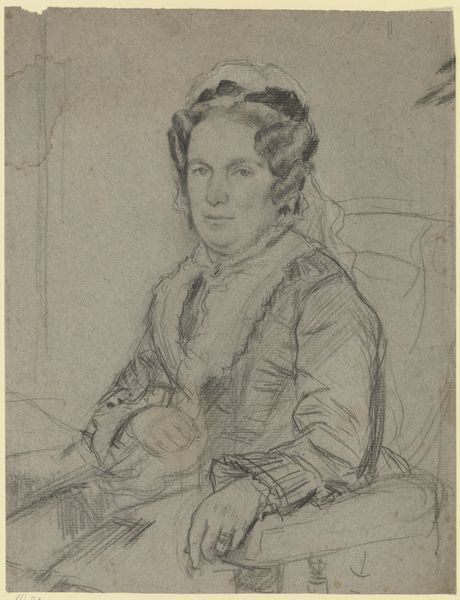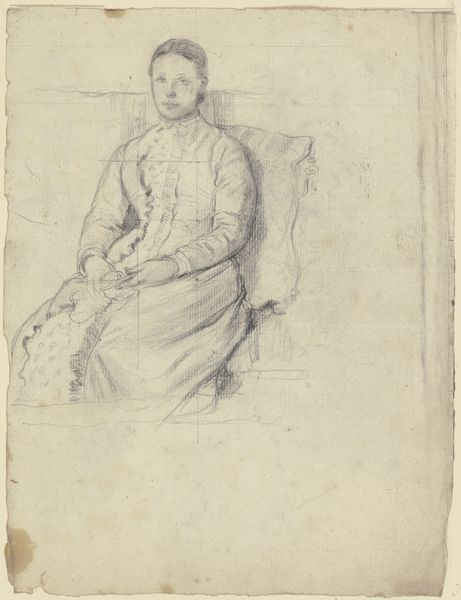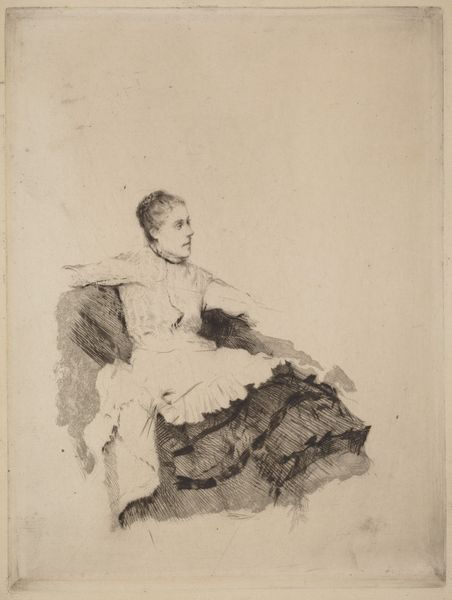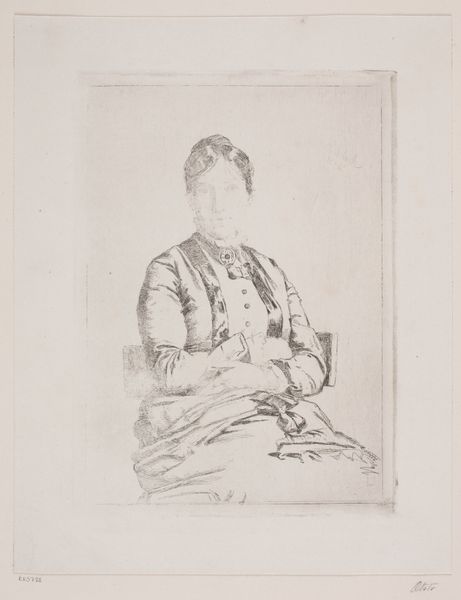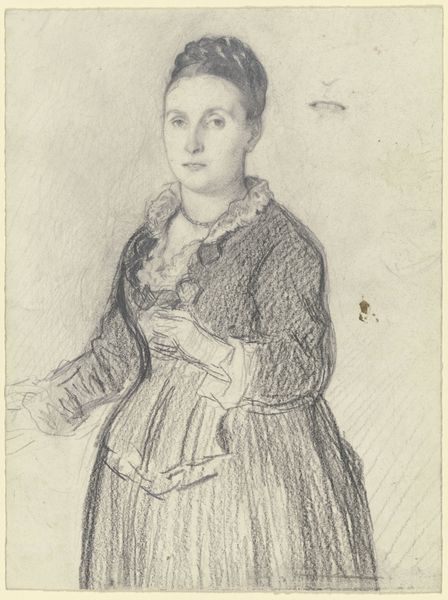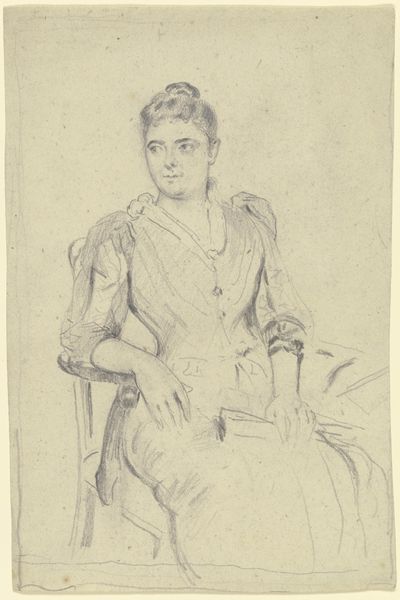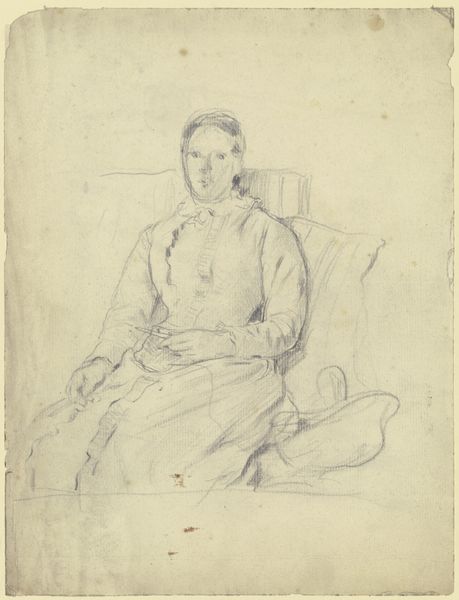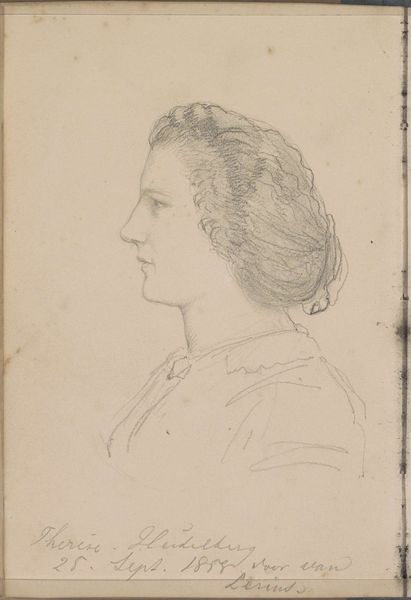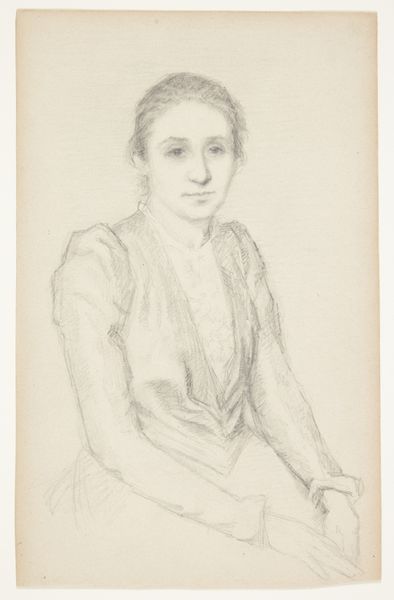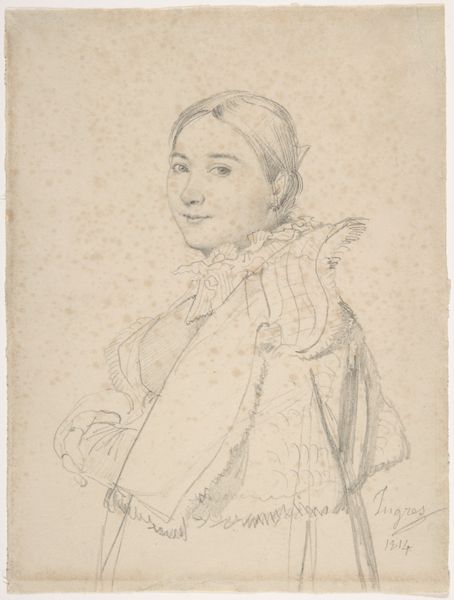
drawing, paper, pencil
#
portrait
#
drawing
#
paper
#
pencil
#
realism
Copyright: Public Domain
Editor: So, this is "Bildnis Amalie Scholderer, der Schwägerin des Künstlers," a portrait drawing from 1900 by Otto Scholderer. It's done in pencil on paper. I'm struck by the sitter's composed stillness, yet something about her expression feels...resigned, maybe? What do you see in this piece, beyond just a portrait? Curator: I see a coded narrative about the restricted roles of women at the turn of the century. The somber tones and realistic style speak to the limitations placed on women’s self-expression within a patriarchal society. Consider the clothing—floral but dark, subtly ornate, but ultimately confining. It speaks of duty and societal expectation. Do you think this visual language reflects her agency, or a lack thereof? Editor: I hadn't considered her clothing as restrictive, but I see what you mean. It's pretty, but not freeing. Maybe her hands clasped so tightly hint at that too? A kind of contained tension? Curator: Precisely. Her very posture seems to convey the burden of representation placed on women, who were frequently evaluated solely on their appearance and social decorum. Is it a feminist statement, or simply a product of its time? It's probably both. It's critical to examine how artists navigate, consciously or unconsciously, the prevailing social forces. Editor: It's interesting how a simple portrait can be interpreted in such different ways, revealing hidden meanings. Thanks for sharing these contextual details. Curator: And thank you for observing the quiet strength beneath the surface of societal expectations! It's that act of questioning, that dialogue, that keeps the art relevant.
Comments
No comments
Be the first to comment and join the conversation on the ultimate creative platform.
